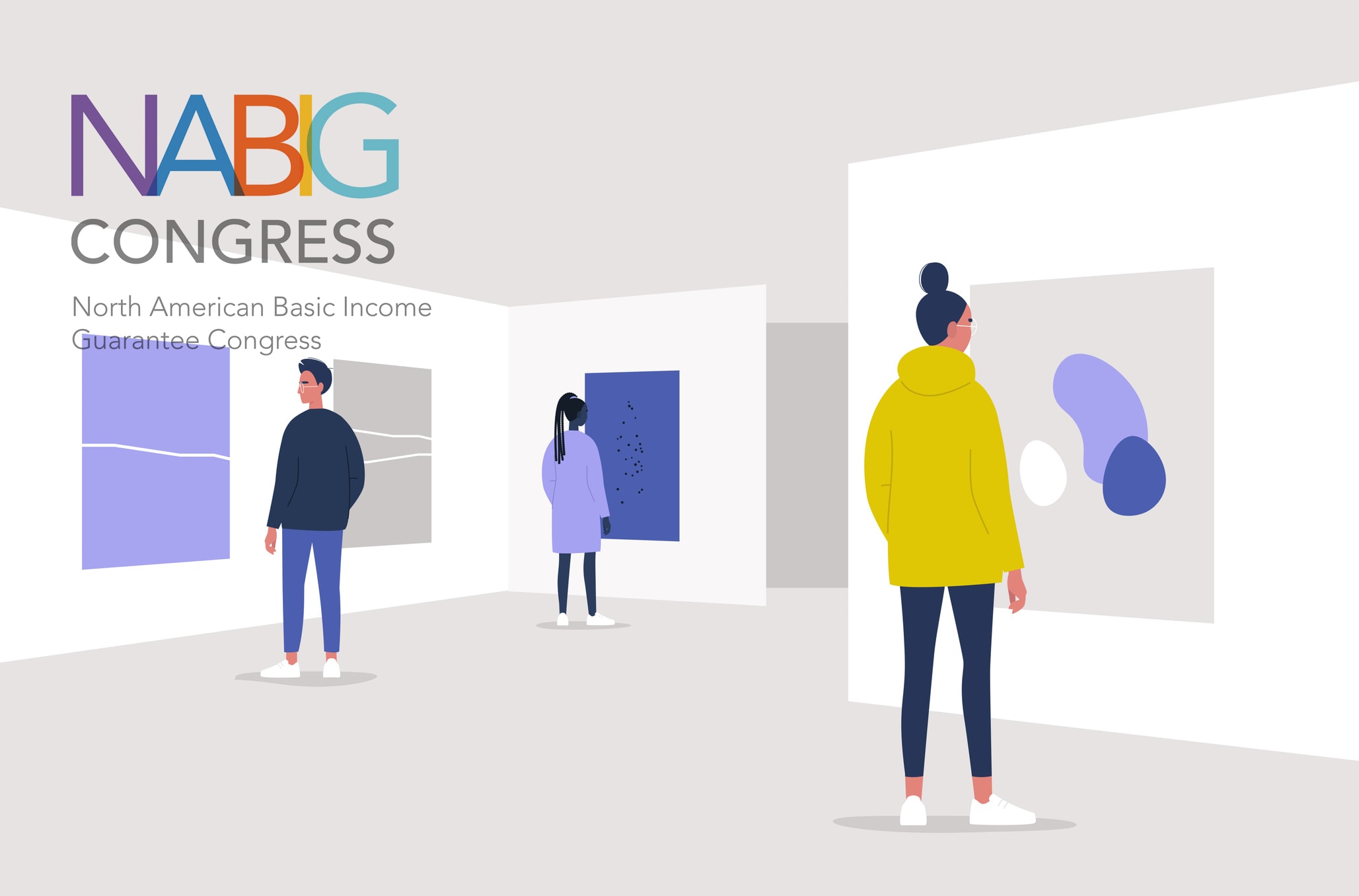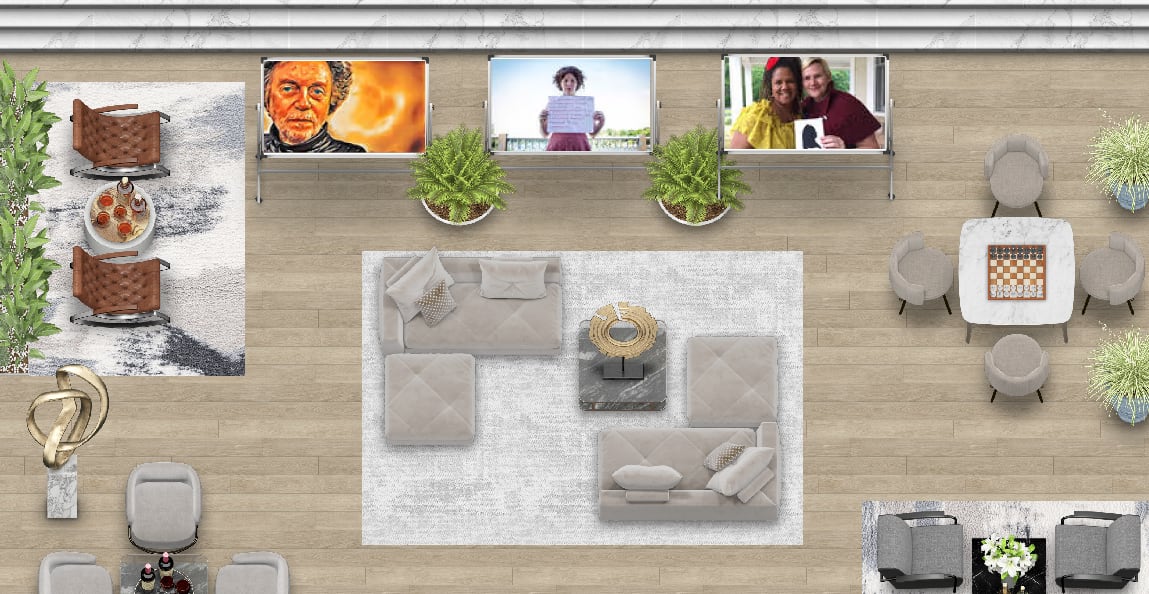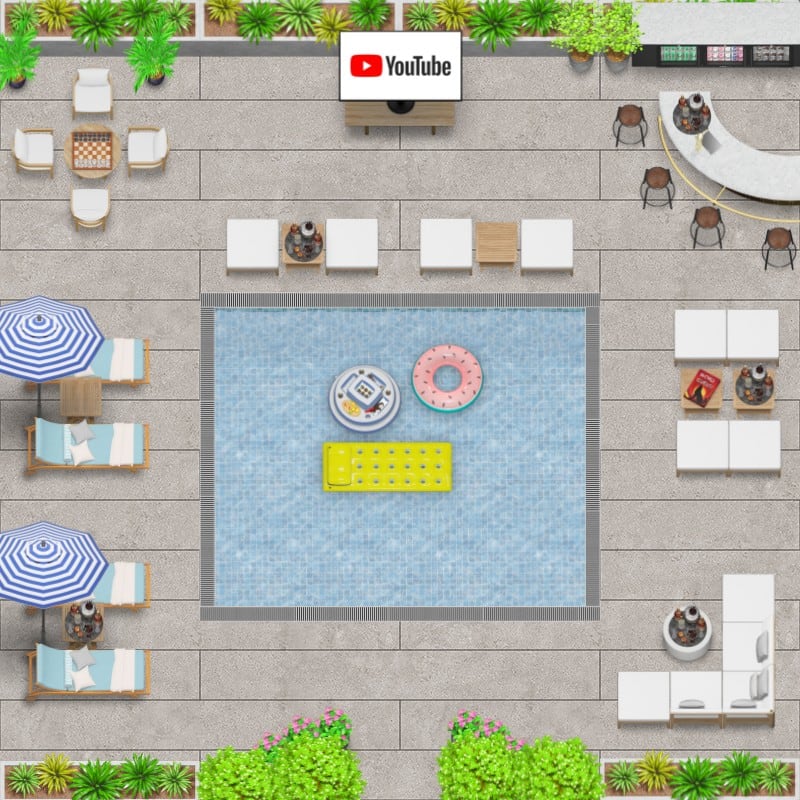How NABIG Congress Kicked Off Virtual Cocktail Parties and Their Own Online Art Gallery
How NABIG Congress Kicked Off Virtual Cocktail Parties and Their Own Online Art Gallery

NABIG Congress
Nonprofit
London, United Kingdom
Mid-Size
Leadership
Multinational
Hybrid
Virtual Events
Virtual Conference
The economic and social justice-oriented conference hosted artists, post-panel meet-ups, and cocktail hours in Kumospace.
The 19th Annual North American Basic Income Guarantee (NABIG) Congress was held June 17-19, 2021. The conference centered on basic income knowledge, activism, education, and policy — and for the first time ever it was held virtually. It's worth noting that a universal basic income, often referred to as UBI, is generally defined as an regular unconditional payment for all that doesn't require specific work or a means-test. In the wake of the economic uncertainties surrounding the pandemic, UBI has become especially topical.
Over the span of three days, NABIG brought researchers, activists, artists, and policy makers together with an aim to move the vision of a universal guaranteed basic income forward. The conference featured 33 sessions, more than 120 speakers, opportunities for mingling online, and a virtual gallery.

Stacey Rutland is on the NABIG Congress committee and is the Founder of the social justice-oriented Income Movement Foundation, a grassroots organization in Portland, Oregon. Stacey notes that in 2020 the NABIG Congress was canceled due to the pandemic. But, this year, the committee felt it was vital to host the conference as Covid-19 has widened social and economic disparities, and UBI dialogue and programs have become especially urgent.
"The entire conference was virtual. We used a combination of Zoom webinars and Crowdcast; Kumospace was used for the social gathering space," says Stacey. "We wanted to make sure that there was still an opportunity for people to have that conference experience, which is the networking, and socializing, and digging deeper into topics after sessions."
The NABIG Congress committee was pleased that Kumospace was able to hold space for these important and less calculated connections.
A Casual Setting for Meaningful Discussions
The committee discovered Kumospace through a colleague at Columbia Business School, and set up numerous Kumospace zones all three days. The NABIG Kumospace was open at any time for people to pop into to socialize or network.
According to Stacey, around 600 guests were registered and there were approximately 15 floors in Kumospace to accommodate all of the conference attendees. Each floor was named after a different topic related to the conference such as a policy subject matter or UBI pilot project. Panelists often used the floors to continue discussions when they were limited on time, or when they wanted to keep diving into a subject in a more casual setting.
"The actual UI of Kumospace makes it so that it does feel like a group having a conversation, and the nature of that is that you're going to have new people come in and people leave, and it feels very fluid… On the last night, there was one floor that had the pool — and everybody just loved hanging out at the pool," says Stacey.

Sparking Dialouge in a Virtual Gallery
One of the most distinctive spaces that NABIG Congress worked with Kumospace's design creation team to custom build was a virtual gallery space, which featured work from four different artists.
"There's a lot of overlap in the basic income community among artists because the idea of basic income is that there's a lot of things that people do that add value to our communities, but that aren't often recognized by the current marketplace… Caregiving is one of them, but then, obviously, art is another," says Stacey.
The four different artworks were set up in a sleek modern-looking virtual gallery space, and if guests clicked a link below the image the link took them to the artists' online portfolios. There were also chic couches to lounge on and a drink tray serving virtual wine. The event opened with the artists speaking about their work, inviting guests to participate in the conversation. Stacey notes that having a great piece of artwork within the space was particularly valuable.
"It really did what we hoped it would do, which was facilitate a conversation towards the deeper implication of art and basic income to support artists," she says. "We got some great feedback from artists that they had some really interesting and energetic conversations with different people."
Art, meaningful conversations, pool time, and calls for economic justice? Truly an event to remember. "It was great," Stacey says.